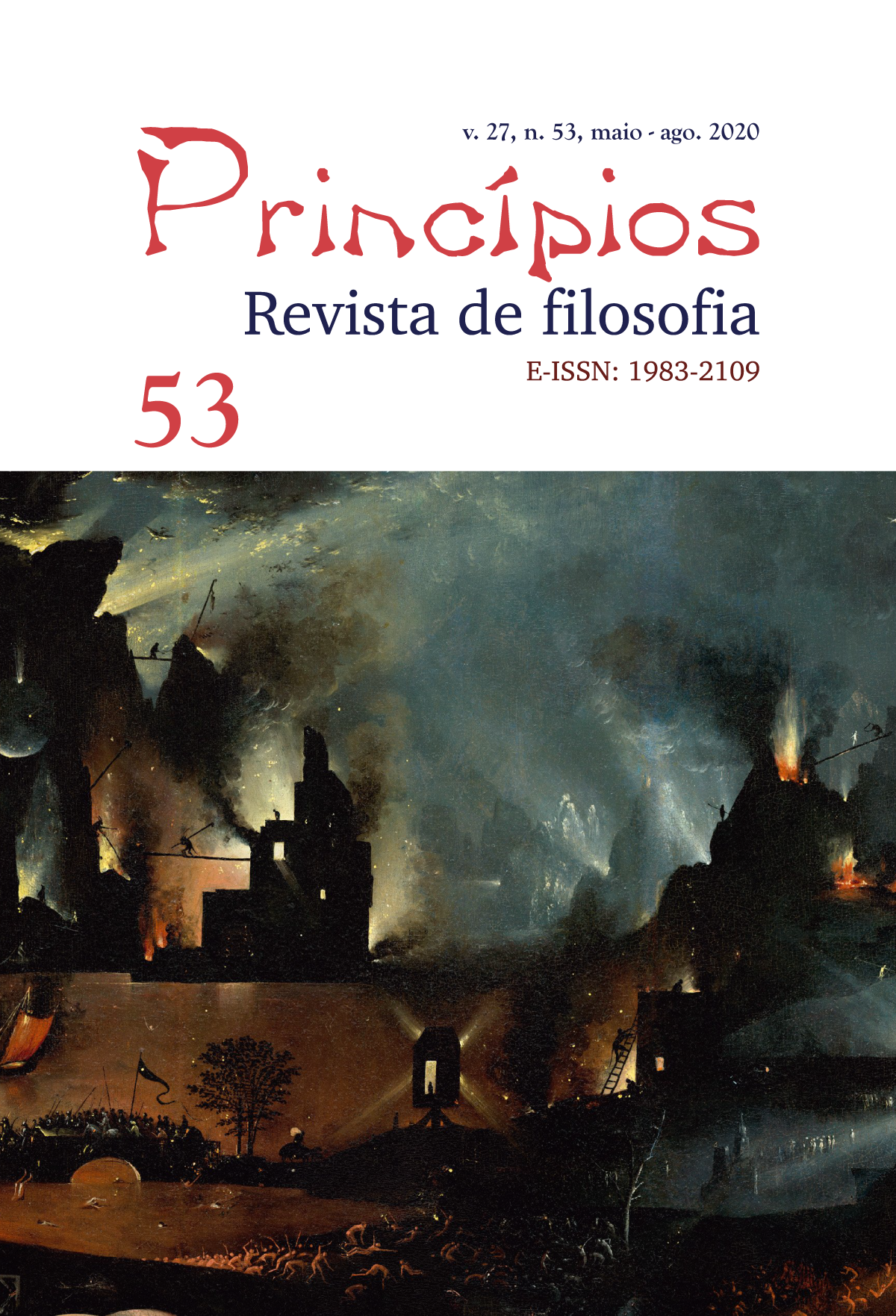Sobre a viabilidade da noção de conteúdo mental estreito
DOI:
https://doi.org/10.21680/1983-2109.2020v27n53ID20618Keywords:
Conteúdo Mental; Internalismo; ExternalismoAbstract
In the relevant philosophical sense, contents are abstract entities that a semantic theory usually associates with utterances and thought acts. These abstract entities are used in the interpretation of language and thought when the cognitive states underlying speech acts and thoughts are specified. We resort to contents in order to account for temporal development of these cognitive states, its unfolding into other cognitive states and, eventually, in intentional acts. This abstract “calculus” involving contents aims at explaining the practical andtheoretical inferences involving cognitive states. Many philosophers consider it to be plausible the thesis that says that the development of the cognitive states of a rational agent depends entirely on his intrinsic properties. This plausibility corresponds to the thesis that there is a narrow mental content that abstracts away the relation that an individual maintains to its social and natural environment. The philosophical discussion in the last decades shown that it is difficult or perhaps (as some of the philosophers might prefer to say) impossible to give a satisfactory formulation to the notion of narrow content. Specifically, my goal is to motivate the rehabilitation of internalism as a compelling position in order to account for mental causation problem, introspective knowledge and puzzles of rationa
Downloads
References
BURGE, T. (1979). “Individualism and the Mental.” Midwest Studies in Philosophy, Vol. 4, pp. 73-121.
CHALMERS, D.J. (2002). “The Components of Content.” Em CHALMERS, D.J. (org.) (2002). Philosophy of Mind: Classical and Contemporary Readings. Oxford: Oxford University Press. Citado de acordo com <http://consc.net/papers/content.html>.
FODOR, J. (1987). “Individualism and Supervenience.” Psychosemantics, pp. 27-53. Cambridge: MIT Press.
——(1991). “A Modal Argument to Narrow Content.” Journal of Philosophy, Vol. 88, No 1, pp. 5-26.
JACKSON, F. (1998a). “Reference and Description Revisited.” Philosophical Perspectives,Vol. 32, suplemento 12, Language, Mind and Ontology, pp. 201-218.
——(2003). “Narrow Content and Representation, or Twin Earth Revisited.” Proceedings and Addresses of the American Philosophical Association, Vol. 77, No. 2, pp. 55-70.
——(2004a). “Representation and Narrow Belief.” Philosophical Issues, Vol. 13, No 1, pp. 99-112.
KRIPKE, S. (1979). “A Puzzle about Belief.” Em MARGALIT, A. (org.) (1979). Meaning and Use. D. Reidel.
MCGINN, C. (1989). Mental Content. Oxford: Basil Blackwell Inc.
PUTNAM, H. (1973). “Meaning and Reference.” Journal of Philosophy, Vol. 70, pp. 699-711.
––––(1975). “The Meaning of ‘Meaning’.” Em Gunderson, K. (org.). Language, mind and knowledge, pp. 131-193. Minneapolis: University of Minnesota Press. Reimpresso em Mind, Language and Reality: Philosophical Papers, Vol. 2, pp. 215-271. Cambridge: Cambridge University Press.
Downloads
Published
How to Cite
Issue
Section
License
Authors retain copyright and grant the journal right of first publication with the work simultaneously licensed under a Creative Commons Attribution License that allows others to share the work with an acknowledgement of the work's authorship and initial publication in this journal.


 Português (Brasil)
Português (Brasil) English
English Español (España)
Español (España) Français (Canada)
Français (Canada)


